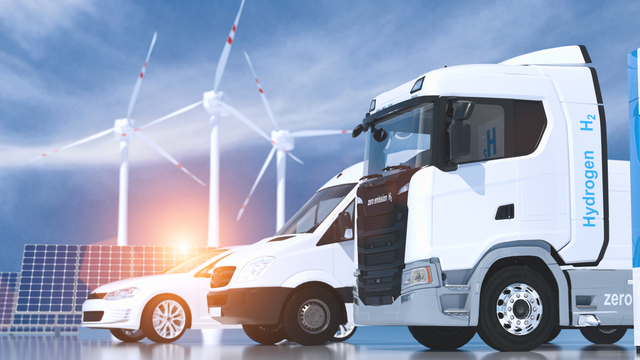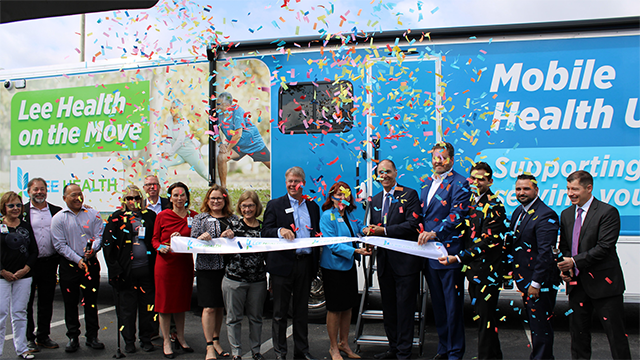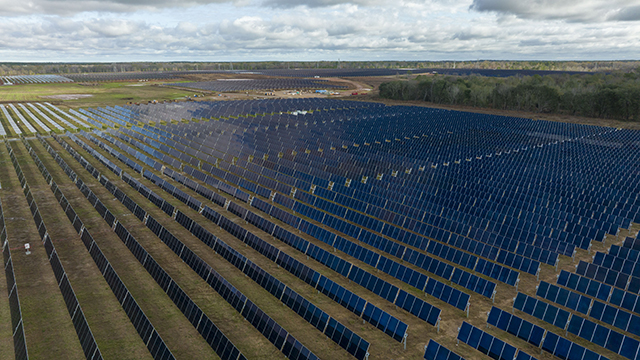By Erica Zamensky
Senior Solutions Marketing Manager, Clean Transportation, Black & Veatch
Business leaders rise by looking ahead. They recognize when it’s time to pivot into new markets, rethink current working models, and make operational changes. Failing to see the signs can sink business, as can failing to efficiently implement the changes necessary to ride the waves of change.
One of the largest disruptions to business today is sustainability and decarbonization, in all aspects of doing business, and not only for environmental reasons but also because it makes financial sense. Early movers can create a future competitive advantage with more efficient operations, stabilized long-term costs, and built-in resilience.
This is especially true in transportation, where market signs – including better battery performance, expanding zero-emission vehicle availability, and volatile fuel costs – are leading businesses to electrify their fleets. Selecting vehicles and chargers, and mapping drive cycles, payload and routes are important considerations and steps, but there is more to electrification than nuts and bolts.
A successful electric fleet transition, whether pilot or full scale, rests on a few elements that might not pop onto the radar. Attention to these three elements will protect timeframes, cost, and investment success.
1. Power Supply
Electric vehicle (EV) charging sites need power. And while it may be an obvious requirement, electricity is often the most difficult attribute to manage. Fleet managers used to control their fuel supply but now they need to navigate a new maze of delivery voltage choices, rate impacts, transformer upgrades, switchgear configurations, and service entrance updates. Beyond the commercial property, new charging loads may exceed feeder capacity and require upgraded or new utility feeders, substation updates, and even new substations. Many businesses are surprised by how long it can take for a utility to energize a site with the capacity needed to support charging—from 3 months to 48 months depending on the upgrade. For example, a fleet of 20 overnight charging light-duty delivery vans would need about 5MW of onsite charging. The utility would need to deploy a new feeder to support charging, which could take 12-26 months.
For those slack-jawed by the timing, here is the silver lining: EV chargers are essentially energy systems, which means businesses can integrate on-site renewable energy and storage to minimize peak demand charges, balance loads, and lower the cost of clean energy. Businesses have greater predictability and control over energy costs which lowers their total cost of operation (TOC).
2. Supply Chains
EV functionality relies heavily on semiconductor chips and raw materials for batteries and electronics. (For the trivia buffs, the average EV contains nearly 2,000 chips—about twice the amount used in combustion-engine vehicles.) Automotive demand for semiconductors is expected to double over the next five years, and the ongoing shortage could last into 2023. The Russia-Ukraine war adds to supply chain woes. Extraction of neon gas and palladium, two essential semiconductor elements, is hindered by the war.
With a focus on independence, the U.S. Government and automakers are making moves to mitigate shortages by procuring chips domestically, developing supply agreements with chip makers, and manufacturing their own chips to use in vehicles. The same goes for battery supply, where new emphasis (and federal funding) is on U.S. centered production. As EV deployments ramp, chargers and switchgear remain in demand. To avoid a situation where charging infrastructure construction is delayed due to equipment, or vehicles are stranded waiting for power, the best advice is to order equipment early in the planning phase.
3. Internal Change
Those closely involved with the clean energy transition are probably excited and ready to go. It’s important to remember that for many, change feels threatening, and electrification requires a new way of working. If the end users do not embrace, learn, and adopt the new way of doing things, the initiative will not be successful, nor will it achieve its expected return on investment. An organizational strategy to guide the transition to an electric operation will help determine and manage operational impacts, keep morale high during the transition, ensure staff skills evolve to support electric fleet operations, and align outcomes with goals.
Individuals at every level should feel empowered to make decisions and provide feedback about the changes, and everyone should align on what program success looks like. A good plan clearly articulates strategic business goals, and leaves room for flexibility if something is not working and needs to be adjusted.
Overhauling a fleet doesn’t happen overnight, and for most, it’s not something they’ve done before. Companies like Black & Veatch do this every day and have deployed thousands of EV charging stations. For more tips that harness their experience and expertise in building cost-efficient, sustainable, and resilient transportation and energy systems, download the guide, 10 Steps to Sustainable Fleets.








